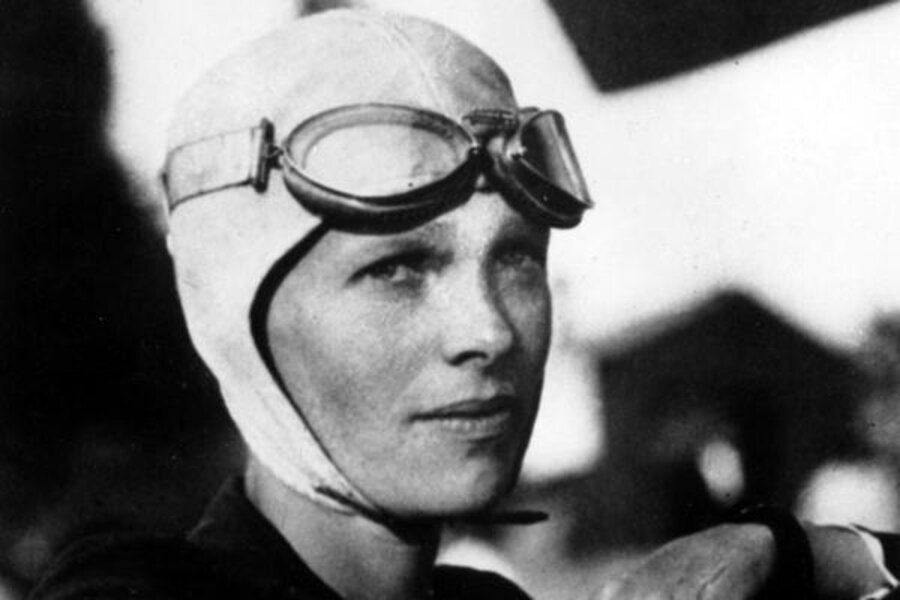Amelia Earhart: Has a scrap of metal solved one of the world’s great mysteries?
Loading...
Ric Gillespie has always been pretty sure about the fate of pioneering aviator Amelia Earhart, who disappeared over the Pacific in 1937 trying to circumnavigate the globe.
Now, a scrap of aluminum that washed up on an atoll 23 years ago, but never seemed to prove anything, may be the critical evidence solving one of the 20th century’s great mysteries.
“This is the first time we’ve ever found something we can link directly to Earhart’s aircraft,” Mr. Gillespie, who heads The International Group for Historic Aircraft Recovery (TIGHAR), told Wired. “And we’re going to treat it as a piece of her aircraft.”
Over the years, several theories have emerged about Ms. Earhart and Fred Noonan, her navigator. The main one is that winds blew the twin-engine Lockheed Electra hundreds of miles off course as it headed for Howland Island, causing it to crash and sink into the ocean when it ran out of fuel. Some have speculated that Earhart may have been on a secret spy mission for her friend President Franklin D. Roosevelt, and that the pair may have been captured by Japanese forces.
Gillespie’s working assumption is that Earhart and Noonan did fly off course, but that they were able to land on an uninhabited atoll, becoming castaways when tides and heavy surf washed their aircraft off the atoll, causing it to break up and sink, scattering parts over a wide area.
Using what fuel remained to turn up the engines to recharge the batteries, they continued to radio distress signals for several days until the aircraft was swept off the reef.
With equipment not available more than 70 years ago – digitized information management systems, antenna modeling software, and radio wave propagation analysis programs – TIGHAR concluded that 57 of the 120 signals reported at the time are credible, triangulating Earhart’s position to have been the atoll now known as Nikumaroro Island.
War in the Pacific made search and recovery efforts difficult. There were tantalizing bits of physical evidence, including shoes, a zipper, and broken pieces of a jar appearing to be the same size and unusual shape as one holding “Dr. Berry's Freckle Ointment.” (Earhart was known to dislike her freckles.)
Partial skeletal remains found in 1940 were subsequently lost, “but computerized re-evaluation of the bone measurements by forensic anthropologists suggests that the skeleton was probably that of a white female of northern European descent who stood roughly Earhart’s height,” TIGHAR reports on its website.
But the three-foot-square piece of aluminum may be the best clue yet.
The essence of TIGHAR’s report this week is that the piece of aluminum was a patch replacing a navigational window. News photos at the time show the shiny patch on the side of Earhart's Electra, which was installed during an eight-day stopover in Miami.
“The Miami Patch was an expedient field repair,” Gillespie told Discovery News. “Its complex fingerprint of dimensions, proportions, materials and rivet patterns was as unique to Earhart’s Electra as a fingerprint is to an individual.”
The search for more evidence continues with the next expedition scheduled for June 2015. Meanwhile, the current focus is on that aluminum patch.
“It seems plausible,” Dr. Les Kaufman, a Boston University biology professor who has spoken as an expert witness about wreckage linked to Earhart, told the Huffington Post. “I have been impressed with Ric Gillespie, who seems to me to be an honest broker, a knowledgeable enthusiast, and generally cautious in drawing conclusions based upon limited evidence.”








